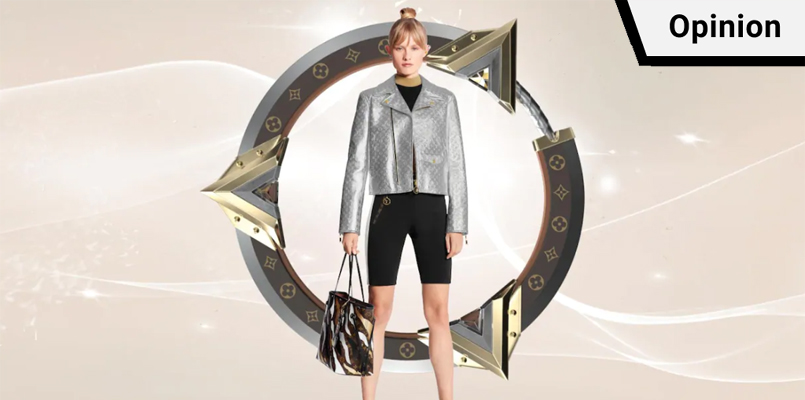Mentioned in this article
On Monday, fashion house and luxury retail company Louis Vuitton launched its LVxLoL capsule collection, which was created in collaboration with League of Legends developer Riot Games. Reactions to the products on social media were plenty and often strongly opinionated. Some people expressed their enthusiasm for the products, while others made their dislike of the products or pricing known.
The apparel was designed by Louis Vuitton’s creative director of women’s collections, Nicolas Ghesquière, who also designed a couple of League of Legends character skins, the True Damage Qiyana Prestige Edition and the upcoming Prestige Edition Senna skin that will be released in 2020.
While the in-game skins are prized at a few dollars each (players were able to attain the Qiyana skin in a package costing a little over $10 USD), the pricing of the LVxLoL products aligns with the luxury fashion brand’s usual pricing standards. The LVxLoL Qiyana print t-shirt is $670. The connected watch is $3,050, plus $420 for the fitting straps. The most expensive item in the collection, a silver lamb leather biker jacket, costs $5,650.

Founded in Paris in 1854 by its eponymous founder, the Louis Vuitton brand has built its images over decades and generations. As a tribute to his father’s genius, Georges Ferréol Vuitton created the Monogram canvas widely associated with the brand today in 1896, which became a sign of distinction, excellence, and rarity.
In the early 2010s, the company was struggling with symptoms of commoditization and one quickly got the impression that there was an utter market saturation of its famed toile Monogram print. As a brand’s image is everything in fashion, it became a problem for Louis Vuitton that the perception became dominant that the brand had lost its scarcity, which is crucial, especially for houses in the upper echelon of the luxury goods market (in part due to a boom in counterfeits produced and sold).
In November 2013, Louis Vuitton hired Ghesquière, who led the company’s resurge by focusing on the brand’s core values. In April of the following year, the Los Angeles Times commented on the lessons learned by Louis Vuitton, “rather than blanketing half of Hollywood, which is what Dior has done so effectively. Ghesquière and Vuitton seem to be going for friends and fashion independents, as in the weeks since the March 5 runway show, only a few stars have had a chance to wear the clothes, suggesting that Vuitton’s strategy is to be more selective about whom it dresses.”
In 2019, Forbes listed Louis Vuitton as the #12 of its list of the world’s most valuable brands at a brand value of $39.3B and annual sales of $15.5B. In its Q3 earnings, parent company LVMH mentioned that the brand just opened a new leather goods workshop in Paris to meet growing demand, further underlining the brand’s current success.

Louis Vuitton’s marketing and business decisions over the last few years have put the company in an odd place, where the brand is on a knife’s edge between focusing on exclusivity and scaling by expanding into new markets and selling online. Considering the current position the brand finds itself in, the collaboration with Riot Games’ League of Legends brand was a brilliant way to further build a niche in that space.
The League of Legends World Championship (Worlds 2019) sponsorship brought Louis Vuitton to the attention of a likely low nine-figure audience worldwide. Riot Games hasn’t published its official viewership for this year’s League of Legends World Championship, but it was reported that last year, 99.6M unique viewers tuned in for the competition.
It’s the release of the LVxLoL collection though, that really brings home the value for Louis Vuitton. Thanks to the collection’s price tags and the fact that it’s aimed at women, which is drastically narrowing down potential customers, the brand was able to make a statement and efficiently communicate its brand value of exclusivity.
Albeit Louis Vuitton further distancing itself with the LVxLoL collection from its origins, where one had to travel to Paris to attain one of the brand’s scarce products instead of just ordering it online, the house carves out a new niche in the luxury goods market, which is built purely on perception. Creating emotionally-loaded brand associations, through events such as the League of Legends World Championships, can potentially become the most efficient way of creating a desire for Louis Vuitton products in the demography represented by esports fans.

